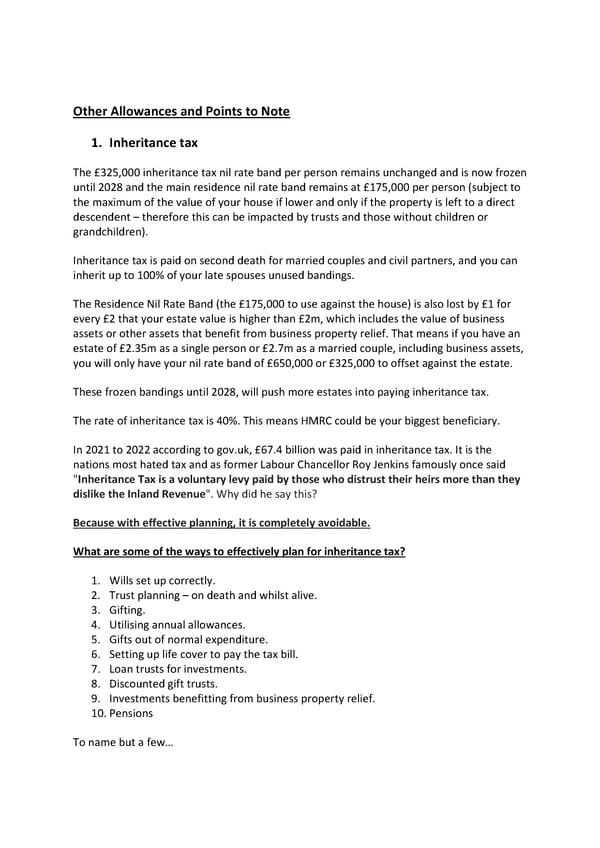Other Allowances and Points to Note 1. Inheritance tax The £325,000 inheritance tax nil rate band per person remains unchanged and is now frozen until 2028 and the main residence nil rate band remains at £175,000 per person (subject to the maximum of the value of your house if lower and only if the property is left to a direct descendent – therefore this can be impacted by trusts and those without children or grandchildren). Inheritance tax is paid on second death for married couples and civil partners, and you can inherit up to 100% of your late spouses unused bandings. The Residence Nil Rate Band (the £175,000 to use against the house) is also lost by £1 for every £2 that your estate value is higher than £2m, which includes the value of business assets or other assets that benefit from business property relief. That means if you have an estate of £2.35m as a single person or £2.7m as a married couple, including business assets, you will only have your nil rate band of £650,000 or £325,000 to offset against the estate. These frozen bandings until 2028, will push more estates into paying inheritance tax. The rate of inheritance tax is 40%. This means HMRC could be your biggest beneficiary. In 2021 to 2022 according to gov.uk, £67.4 billion was paid in inheritance tax. It is the nations most hated tax and as former Labour Chancellor Roy Jenkins famously once said "Inheritance Tax is a voluntary levy paid by those who distrust their heirs more than they dislike the Inland Revenue". Why did he say this? Because with effective planning, it is completely avoidable. What are some of the ways to effectively plan for inheritance tax? 1. Wills set up correctly. 2. Trust planning – on death and whilst alive. 3. Gifting. 4. Utilising annual allowances. 5. Gifts out of normal expenditure. 6. Setting up life cover to pay the tax bill. 7. Loan trusts for investments. 8. Discounted gift trusts. 9. Investments benefitting from business property relief. 10. Pensions To name but a few…
 Use it or Lose it - Tax Year End Planning 2023 Page 11 Page 13
Use it or Lose it - Tax Year End Planning 2023 Page 11 Page 13